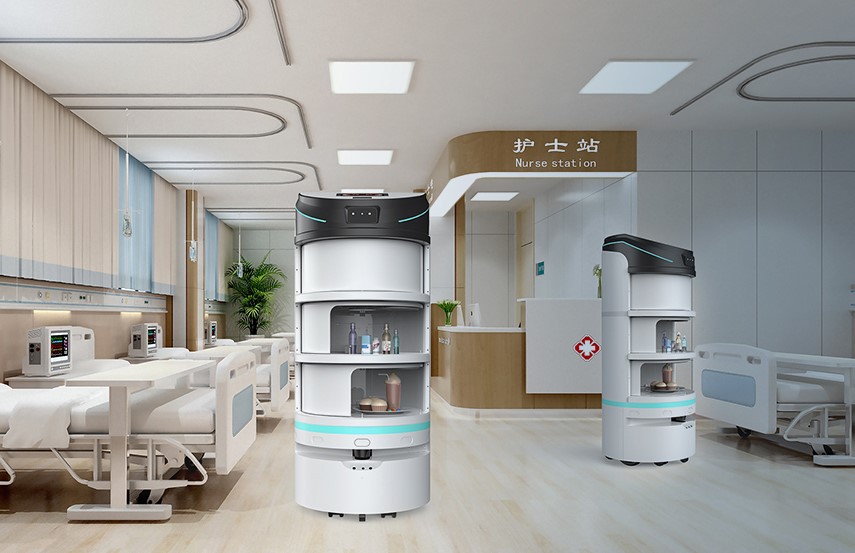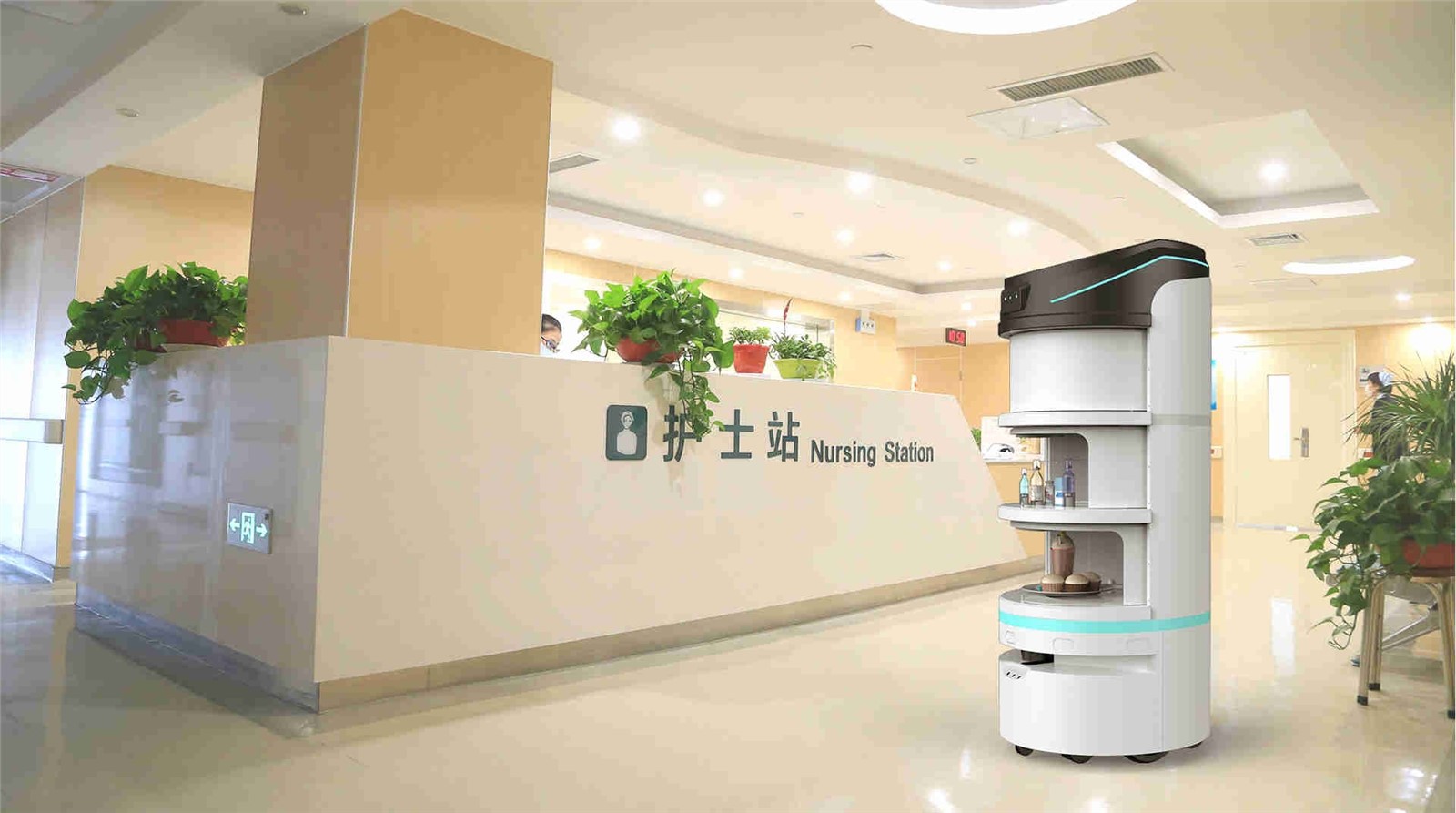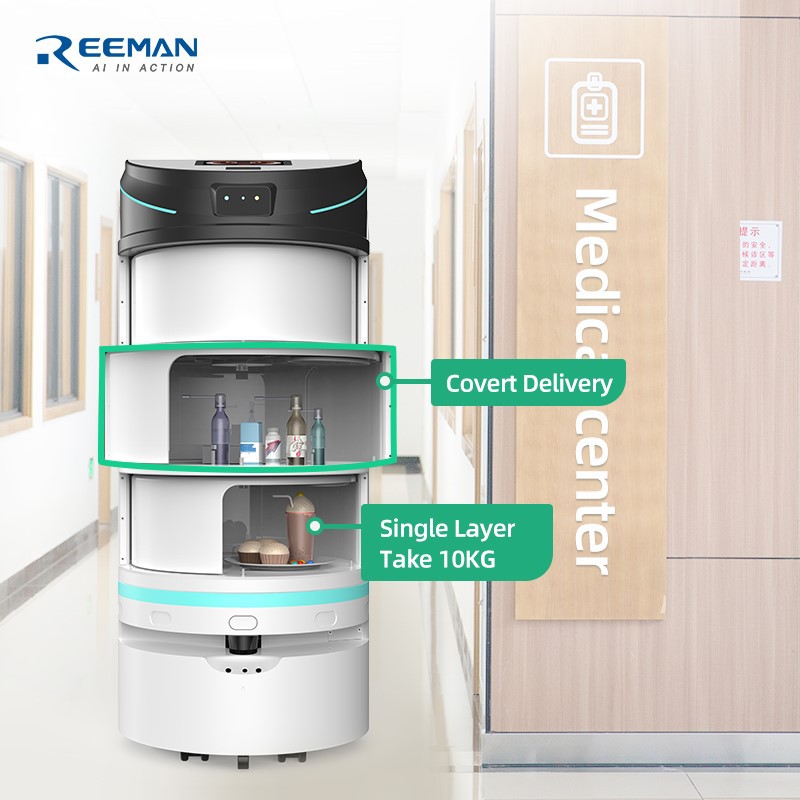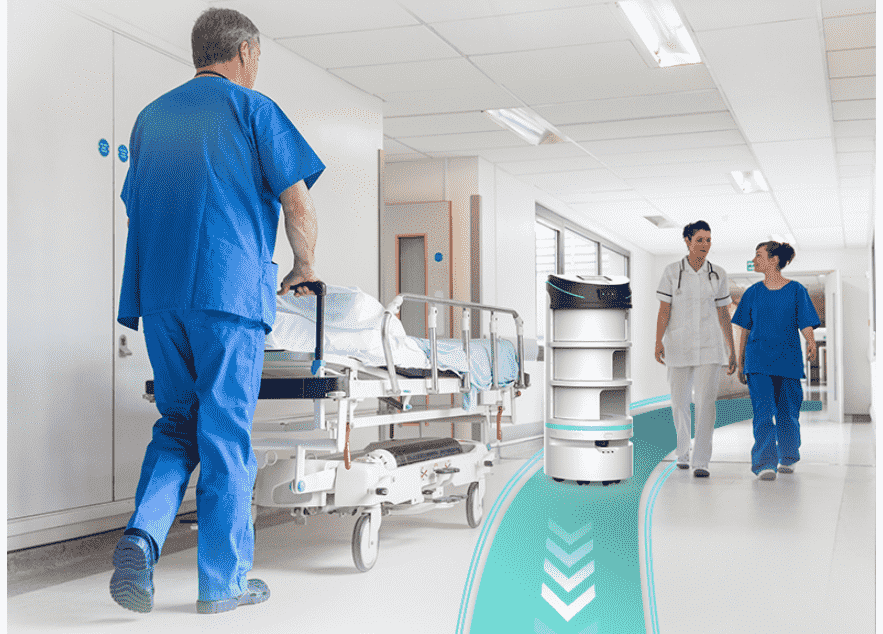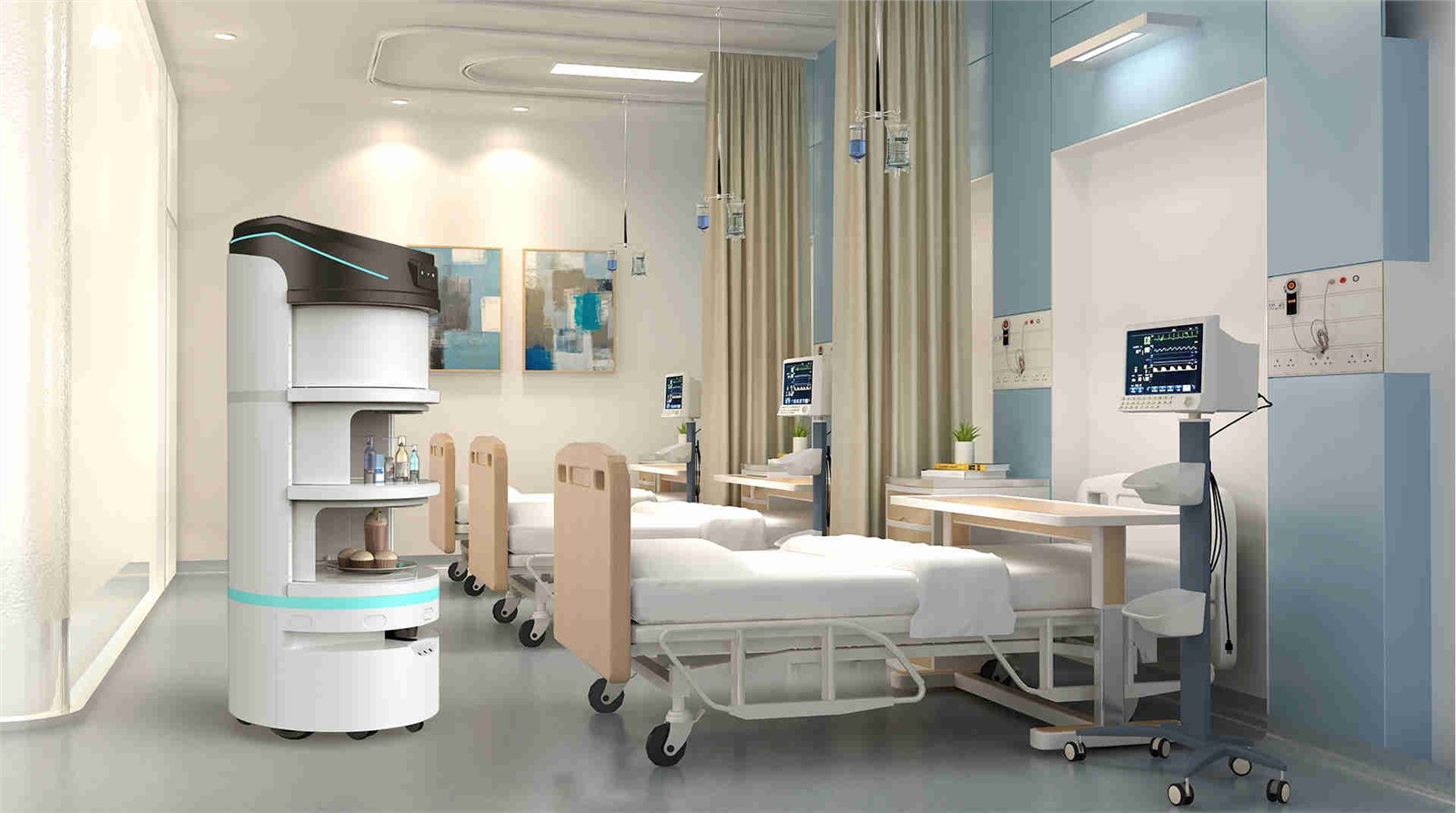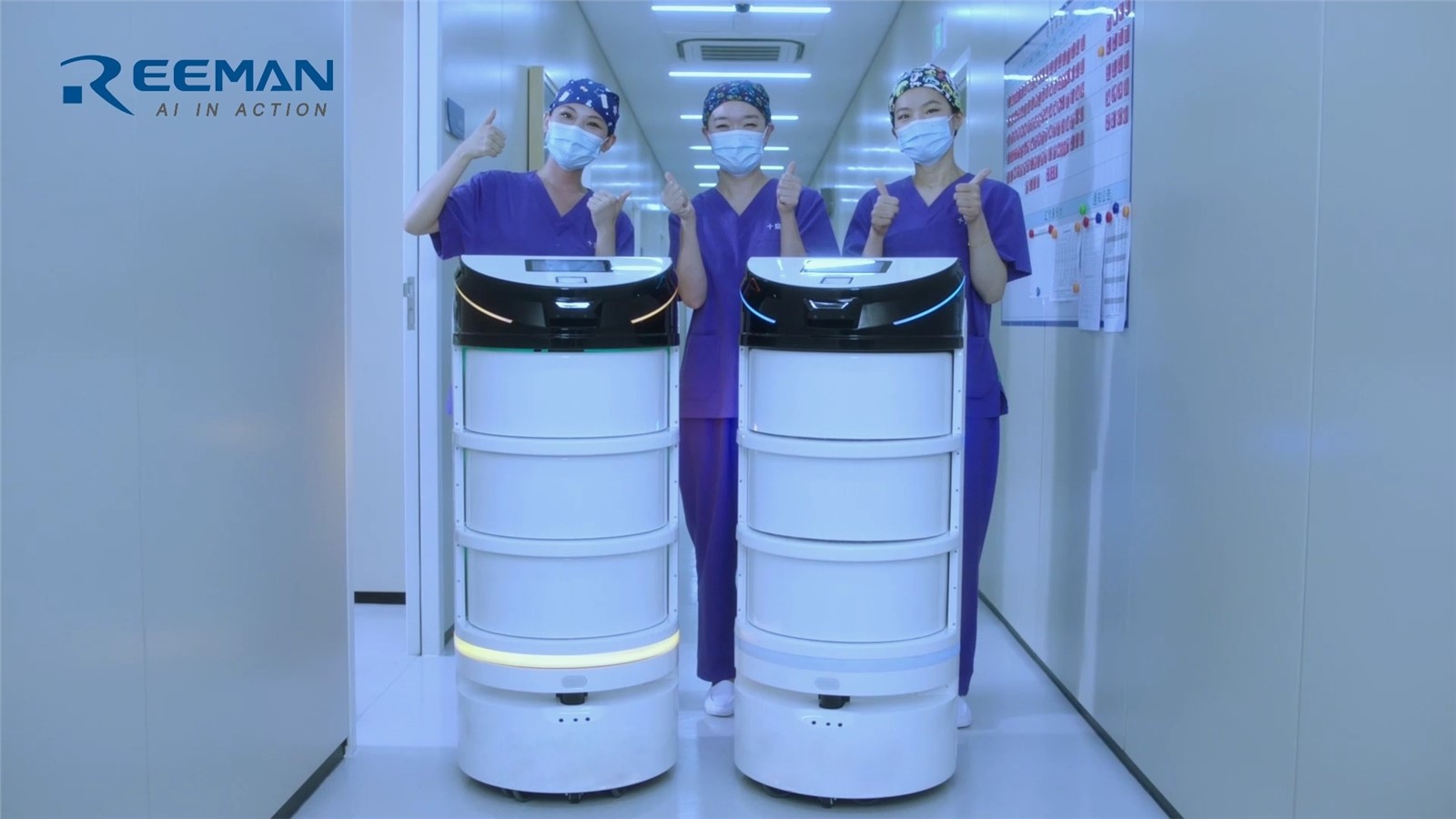In a post-pandemic world, innovations in healthcare are becoming more and more prevalent. Taking the necessary measures to protect and provide the best care possible for patients is incredibly important — now more than ever. Technology has certainly revolutionized the way hospitals operate in a number of ways. One cutting-edge invention that has made a huge difference already is delivery robots for hospitals and other healthcare facilities.
These high-tech delivery robots have made it possible for medicine and supplies to be transported in a safe, fool-proof way. They have the ability to navigate busy, narrow corridors, carry heavy loads, and even interact with doctors, nurses, and patients. In this article, we’ll dive into the fascinating world of delivery robots for hospitals, so stick around!
Technology of Delivery Robots
To gain a better understanding of how delivery robots for hospitals work, you must first understand the technology behind delivery robots. These robots are typically completely autonomous, and they’re specifically designed to transport goods, food, and various supplies from one location to another without human involvement. This means human staff (in hospitals, or anywhere else) will have more time on their hands to complete more important tasks.
Delivery robots use sensors and cameras to navigate their surroundings autonomously, and there are several different types — each with its own fascinating features. One type of delivery robot you’ll commonly see in hospitals is the wheeled robot. Wheeled robots are excellent at avoiding obstacles, and they can carry just over 100 pounds.
Another type you might have seen is the aerial drone. Aerial drone robots have rotors, which allow them to fly through the air while carrying supplies. They usually come equipped with sensors and computer vision, so they won’t get lost while navigating more complicated environments.
These newfangled machines work by using a combination of different technologies. Most are able to map out the environment they’ve been programmed to traverse. They’re also designed to take the most efficient route, meaning they’ll deliver your supplies to you far more quickly than a human delivery driver would be able to.
Benefits of Using Delivery Robots in Hospitals
There are a number of important benefits to using delivery robots in hospital settings. For example, delivery robots can help make things a whole lot more efficient. With robots taking care of delivery duties, nurses and doctors can focus solely on providing their patients with care. If you’ve ever been to a hospital, you know how long the wait times can be. Delivery robots can help reduce those wait times significantly.
The utilization of delivery robots in hospitals can also help improve patient care. Patients will no longer have to wait around for medication or supplies to arrive. With the assistance of a delivery robot, everything they need will be immediately available to them. These robots can also help transport lap samples, meaning patients won’t have to wait as long to get a diagnosis.
Delivery robots can also reduce the costs of hospital operations. They minimize the need for manual labor, and they’re unlikely to accidentally damage medical supplies and equipment. These robots are sure to improve staff satisfaction as well because they take care of certain burdens that nurses typically have to deal with.
Reeman hospital delivery robot - White series, specially designed for the hospital's multi-bacteria environment, independent closed storage function, completely isolate the contact between the delivery items and the outside environment, reducing the risk of food and medicine being infected by outside bacteria, providing safer and more secure delivery services for hospital patients.
Challenges and Limitations of Delivery Robots in Hospitals
While delivery robots are quite revolutionary, they don’t come without their own set of particular challenges. For example, some robots might have a difficult time navigating around obstacles and avoiding collisions with people in hospitals. There’s no place busier than a hospital after all, so that’s definitely something to take into consideration.
Hospitals also tend to have a very specific system in place, so there are bound to be some integration challenges when it comes to implementing delivery robots. It makes sense that some hospital staff might worry about communication issues (i.e. a staff member running out to get supplies when a delivery robot has already completed the task).
The upfront costs that come with purchasing and maintaining these delivery robots are also quite high. It’s important to keep in mind that delivery robots are an investment, so hospitals may lose money before they start to gain it. There are also a number of regulatory challenges that should be addressed. Hospital workers might have concerns about safety, privacy, and the way robots will handle medical equipment.
Case Studies of Delivery Robots in Hospitals
If you need proof of how successfully delivery robots have been implemented into hospital settings, then look no further! At UCSF in San Francisco, CA, a fleet of delivery robots was employed to transport lab samples, medicine, and other important supplies throughout the hospital. These robots reduced wait times for patients, and the staff felt less burdened with responsibilities as well.
Another case took place at the Maimonides Medical Center in Brooklyn, NY, where delivery robots were implemented to transport supplies, samples, and medication to patients. Having the robots help out significantly reduced the risk of errors and cut down on wait times for patients. The staff again reported feeling less burdened, as they were given more time to focus on patient care and other important hospital operations.
The third case we’ll talk about is the case at Brigham and Women’s Hospital in Boston, Massachusetts. Much like in the other cases, this hospital used delivery robots to transport important supplies and medications to patients and staff. The robots again reduced errors, and made it so patients didn’t have to wait so long to be taken care of. Staff again reported feeling like a significant burden was lifted off their shoulders.
Conclusion
The use of delivery robots in hospitals has already revolutionized the way hospitals operate. Though there may be some bumps in the road — as there typically are when something new is implemented into a very particular system — these bumps can easily be smoothed out. The efficiency of delivery robots, and the burden they take away from hardworking hospital staff is absolutely worth the investment!
If you have ideas to improve the hospital experience and operational efficiency through robots, please contact Reeman, we also have floor cleaning robots and disinfection robots which are very suitable for hospital use. We can provide you with the perfect solution for intelligent hospital services.
Contact Us:
Email: reeman.sales1@reeman.cn
Whatsapp: +86 18312160619
About Us:
Reeman, derived from the word "reinforce" (REE) and "human" (MAN) Intends to enhance human capabilities. Let robots help humans everywhere and add infinite possibilities to life.
Follow Us:
Facebook: https://sourl.cn/Gg9UJd
Youtube: https://sourl.cn/cwyd27
LinkedIn: https://sourl.cn/eQ8VPE

